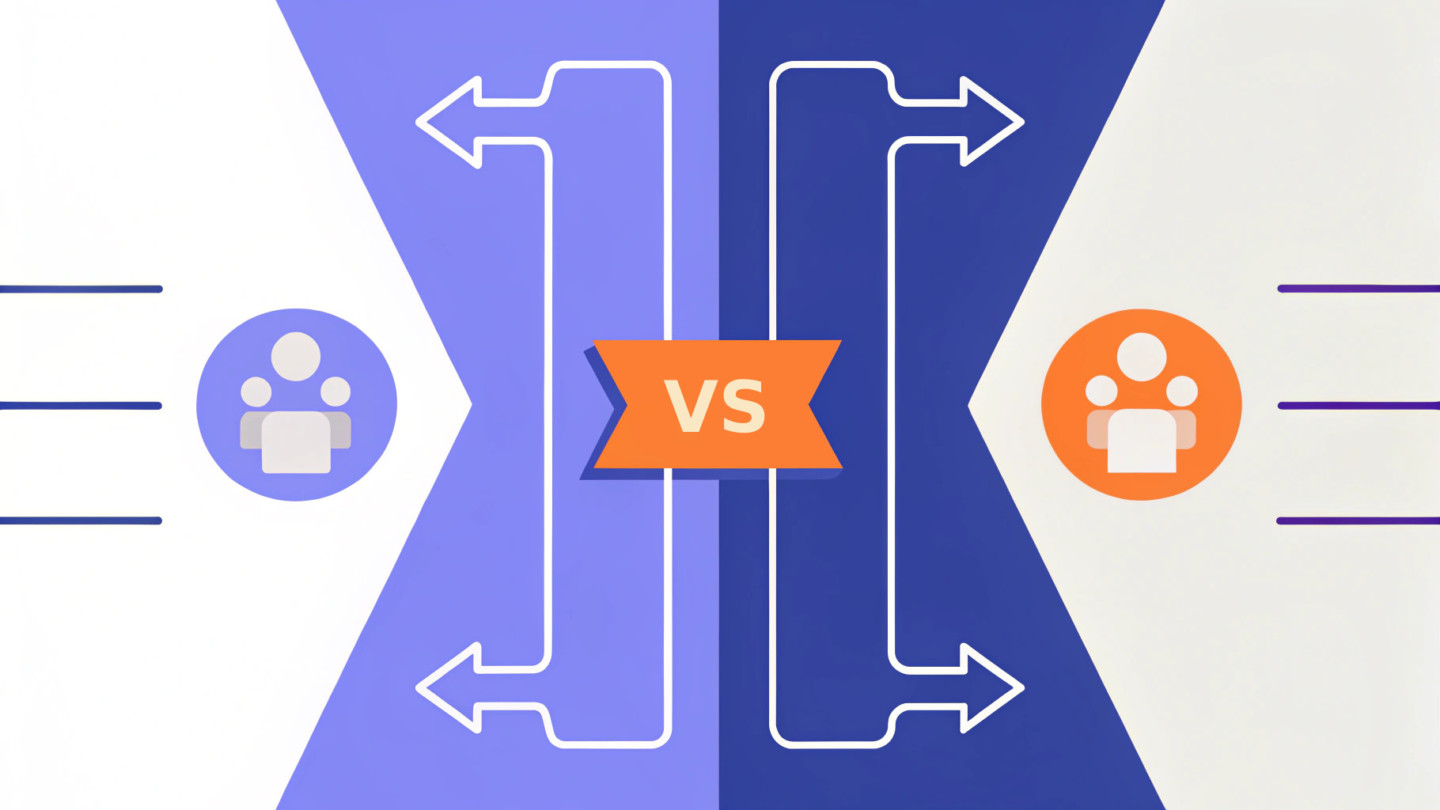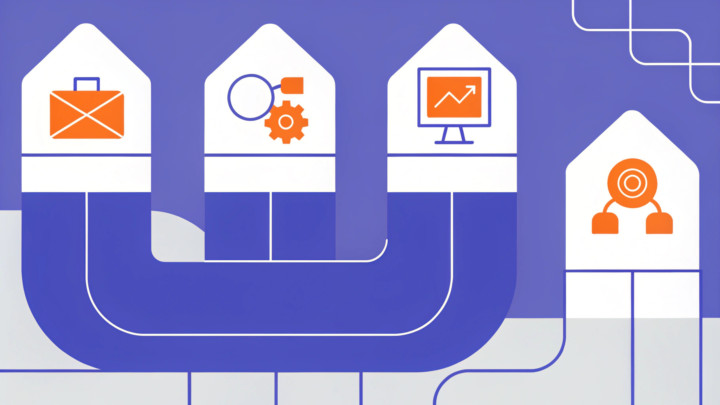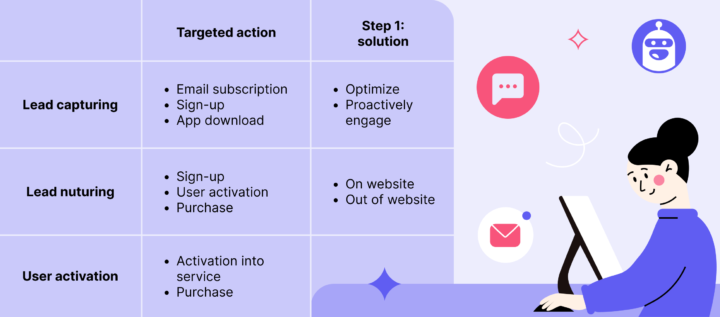Understanding inbound marketing vs outbound marketing: A comparative analysis of effectiveness and strategies

Overview
Inbound marketing often proves to be more effective than outbound marketing, and we understand why. Many marketing teams struggle with attracting customers in a way that feels genuine. Inbound marketing shines by focusing on creating valuable content and nurturing relationships, which fosters trust and engagement. Did you know that 79% of firms with a blog report a positive ROI? Moreover, 80% of business leaders prefer organic information acquisition. These statistics highlight a stronger consumer response to inbound strategies, especially when compared to the often intrusive nature of outbound methods.
You’re not alone in feeling overwhelmed by marketing choices. The good news is that inbound marketing offers a practical solution to these challenges. By prioritizing engagement and trust, you can connect with your audience on a deeper level. This approach not only resonates with potential customers but also encourages them to choose your business over others.
Consider taking the next step toward implementing inbound strategies. Embrace the power of valuable content and relationship-building to attract your ideal customers. It’s a journey worth taking, and you have the tools to make it happen.
Introduction
In the ever-evolving landscape of marketing, we understand that navigating the differences between inbound and outbound strategies can be overwhelming for businesses striving to succeed.
- Inbound marketing focuses on creating valuable content that truly resonates with consumers, fostering lasting relationships built on trust.
- On the other hand, outbound marketing often relies on traditional, direct outreach methods that can feel intrusive, interrupting the consumer experience.
As you navigate the complexities of modern consumer behavior, recognizing the effectiveness of these approaches is essential. With the rise of digital channels and shifting expectations, it’s crucial for businesses to adapt their strategies — not just to attract, but to genuinely engage their target audience.
This article will explore the core concepts, advantages, and future trends of inbound and outbound marketing, offering insights to help you optimize your efforts for sustained success.
Defining inbound and outbound marketing: Core concepts
Inbound promotion is a strategic approach that emphasizes the differences between inbound and outbound marketing by focusing on attracting customers through valuable, tailored content and experiences. We understand that businesses, especially smaller ones, often struggle to connect with potential clients. By prioritizing the creation of engaging materials, businesses can draw potential customers into their sphere, fostering a relationship based on trust and relevance. This stands in stark contrast to external promotion, which often feels intrusive, actively contacting potential clients through conventional methods such as cold calls, direct mail, and advertisements.
Outbound promotion can interrupt the consumer experience, leading to disengagement. As Aaron Cort, Head of Marketing at Craft Ventures, points out,
People have such a high bar for what they act on these days, for both business and consumers.
This insight underscores the need for marketers to adapt their strategies to meet evolving consumer expectations, especially in 2025.
Importantly, 80% of business leaders prefer to obtain information about a company naturally rather than through search engine advertisements. This statistic highlights the effectiveness of inbound strategies. Additionally, the case study titled ‘The Necessity of Being Data-Driven’ reveals that 29% of marketers recognize the importance of data in informing their strategies, illustrating the critical role of data in aligning initiatives with consumer values. Furthermore, current trends show that 18% of the top SaaS companies are using podcasts as part of their promotional efforts, reflecting an innovative approach to engaging audiences and enhancing brand visibility.
There’s no doubt that navigating these marketing waters can be challenging. But by embracing inbound promotion, you can create a more meaningful connection with your audience, making it easier for them to engage with your brand.

Key differences between inbound and outbound marketing
The fundamental difference between inbound marketing and outbound marketing strategies lies in how they engage customers. Sometimes it might be difficult to choose between these two options, which one will be more effective at a certain point of your growth. Inbound strategies focus on attracting potential clients through valuable content that resonates with their needs and interests, fostering trust and building genuine relationships. This approach allows businesses to connect with their audience organically, which can feel much more rewarding.
Consider this: 77% of internet users regularly read at least one company blog. This statistic highlights a strong demand for informative content that truly resonates with consumers. Moreover, 79% of firms with a blog report a positive ROI, underscoring the effectiveness of inbound marketing. In contrast, outbound marketing often relies on direct outreach strategies that can sometimes feel intrusive or overly aggressive.
While outbound approaches might yield immediate responses, they often lack the depth required to cultivate long-lasting customer relationships. As we look ahead to 2025, the importance of these distinctions becomes even clearer. With the growing reliance on digital platforms, most SaaS and B2B software sales are expected to occur online. This shift makes a strong promotional strategy essential for success.
Additionally, with 47% of consumers turning to Google for personal data usage, building trust through proactive engagement is more important than ever. While outbound strategies can deliver quick results, the comparison between inbound and outbound marketing reveals that inbound generally fosters a higher level of engagement over time. In this evolving landscape, it’s crucial for professionals to thoughtfully evaluate their objectives and choose the approach that aligns best with their target audience and desired outcomes.

Pros and cons of inbound and outbound marketing
Inbound strategies offer a wealth of advantages, especially their cost-effectiveness and ability to attract high-quality leads. By delivering valuable content that truly resonates with customer needs, this approach fosters long-term relationships. In fact, 79% of companies with a blog report a positive ROI, highlighting how effective content strategies can be.
Yet, we understand that inbound promotion requires a commitment to consistent content creation and may demand patience before yielding significant results. In contrast, outbound promotion can generate leads quickly and is often simpler to execute. However, it typically comes with higher costs and can feel intrusive, potentially leading to lower engagement rates.
Recent data shows that mobile advertising accounted for 77% of all digital ad spend in 2024, emphasizing the necessity for businesses to adopt a mobile-first approach. As Jack Shepherd, Co-Founder & Marketing Director, noted,
The Digital Marketing scene is set to grow even more, shooting up at a rate of 32.1% and reaching a value of USD 24.1 billion by 2028.
Each promotional approach has its merits, with their effectiveness hinging on the specific objectives and target audience of a business.
Take, for instance, Framebridge, which effectively utilized attraction strategies by offering educational content on art hanging. This not only builds trust with new clients but also boosts the likelihood of future purchases. This case exemplifies how inbound promotion can create real value for customers, thereby reinforcing the strategy’s benefits. Thus, choosing between inbound and outbound marketing necessitates a thoughtful evaluation of these elements.

Evaluating the effectiveness of inbound vs outbound marketing
Evaluating the effectiveness of incoming promotion can often feel overwhelming for marketing teams, especially smaller ones. You might find yourself wondering how to measure engagement rates, lead quality, and conversion rates over time. These metrics are crucial as they provide insights into how well your brand connects with its audience and nurtures leads through the sales funnel. In fact, the global digital promotion sector is anticipated to expand at a CAGR of 13.9% during the forecast period, highlighting the growing importance of inbound marketing versus outbound marketing strategies in a thriving market.
At Dashly, we understand that navigating this landscape can be daunting. That’s why our omnichannel communication tools are designed to enhance your promotional effectiveness. By joining all your communication channels together, our platform enables marketing teams to engage with users across multiple platforms through a unified inbox. This means optimizing response times and maintaining conversation context, allowing your team to manage marketing campaigns and conversations with leads seamlessly. Website chat, email, messengers, and social media — all channels in one place.
But what about external promotion? It’s often assessed by prompt response rates and direct sales conversions, giving you a snapshot of how effectively your efforts are capturing attention. As Thomas Hirschmann, CEO of Core Cortex, wisely states, ‘I think the most important thing is to really be customer-centric, understand your audience, and get closer to measuring whether you’re relevant or not.’ This perspective reinforces the necessity for marketers to adopt a customer-centric approach. Many companies are discovering that a cohesive strategy — utilizing both inbound and outbound marketing techniques — yields the best outcomes.
Take social media promotion, for instance. It has proven to be a highly effective channel for attracting customers, significantly boosting brand awareness and website traffic. And when a visitor gets toy our website, that’s where Dashly comes into play. By leveraging automation tools, such as chatbots and triggered message sequences, you can automate such tasks as lead capture, qualification and nurturing. This way, you can work with leads 24/7, even when your team is asleep, and eliminate any human error. No lead will leave your site unengaged. This will allow your marketing team to focus on more complex cases that require a personal touch. Additionally, our analytics tools empower you to monitor your marketing campaigns’ performance across all channels, setting benchmarks for conversion and identifying opportunities for improvement.
This blended approach not only captures immediate interest but also fosters long-term relationships with your customers, ultimately leading to sustained growth and loyalty. You’re not alone in this journey — Dashly is here to support you every step of the way.

Dashly’s your versitile helper in inbound marketing:
Strategies for successful inbound and outbound marketing integration
To effectively combine strategies for inbound marketing versus outbound marketing, it’s essential for companies to create a cohesive plan that leverages the unique strengths of both approaches. This combination not only facilitates prompt lead generation through external efforts but also nurtures those leads through internal tactics. While outbound promotion can enhance brand awareness, it often falls short in delivering the targeted messaging that inbound strategies excel at.
In 2025, data analytics will play a crucial role in identifying the most impactful channels for reaching specific audience segments. By analyzing these insights, businesses can tailor their promotional initiatives to resonate with their target demographics. Notably, 26% of marketers plan to increase their investment in Facebook in 2025, underscoring the importance of adapting to current promotional trends.
As Marisa Murgatroyd highlights, top short-form video investments include Twitter Spaces, YouTube Shorts, and Instagram Live Rooms. This emphasizes the significance of evolving platforms and consumer preferences in shaping promotional strategies. Furthermore, case studies on lead generation automation reveal that many companies employing strategies from inbound marketing versus outbound marketing, particularly through incoming promotion automation, have reaped substantial benefits, especially with email outreach being the most effective channel for early-stage lead generation.
The combination of these methods not only simplifies promotional efforts but also enhances overall efficiency in lead generation. Ultimately, this balanced approach aligns with both short-term and long-term business objectives, helping you navigate the complexities of marketing with confidence.

The future of inbound and outbound marketing: Trends and innovations
As we approach 2025, many small business owners may be feeling the weight of navigating the evolving promotional landscape, especially between inbound and outbound marketing. It’s understandable to feel overwhelmed, but there’s a notable trend that can help: the growing reliance on AI for personalization. This technology allows marketers to tailor their strategies based on consumer behavior and preferences, making your efforts feel more targeted and effective. Plus, did you know that 79% of companies with blogs report a positive ROI? This underscores just how powerful content can be in fostering engagement.
Looking ahead, 26% of marketers plan to increase their investment in Facebook in 2025. This indicates that the platform remains crucial in digital promotional strategies. Additionally, the rise of video content is reshaping how we capture audience attention, often outperforming traditional formats. Embracing omnichannel strategies can further enhance your efforts, ensuring cohesive communication across various platforms.
By integrating these trends into your marketing tactics, you can expect to see enhanced engagement and higher conversion rates. For instance, consider the Delight Stage case study, which illustrates how AI-driven tools — like automated follow-ups and satisfaction surveys — can significantly improve post-purchase experiences. Conversational marketing tools like Dashly can help automate routine tasks and streamline customer interactions, fostering loyalty and advocacy among your customers.
This highlights the importance of blending inbound and outbound marketing methodologies to thrive in a competitive environment. Priya Gill from SurveyMonkey emphasizes the role of data in understanding audience needs, stating,
We’ve found success using data (surveys and polls) to understand what our audiences care most about, keeping content short and snappy, showcasing authenticity, and testing and iterating on our ideas.
As these innovations unfold, remember that embracing them can position your business for greater success.

Conclusion
Navigating the world of inbound and outbound marketing can be challenging, especially for small business owners like you. It’s easy to feel overwhelmed by the different methodologies that cater to the ever-evolving needs of consumers. Inbound marketing focuses on creating valuable content that builds trust and fosters lasting relationships. On the other hand, outbound marketing often employs direct outreach tactics that may come off as intrusive. While these tactics can generate immediate responses, they sometimes lack the depth needed for sustained engagement. The statistics show a clear preference among consumers for organic interactions, reinforcing the effectiveness of inbound strategies.
As the marketing landscape evolves, integrating both inbound and outbound approaches becomes essential for businesses looking to optimize their efforts. By harnessing the strengths of each methodology, you can generate immediate leads while nurturing them through personalized, value-driven content. The rise of AI and omnichannel strategies highlights the importance of adapting to consumer behavior and preferences, ensuring your marketing remains relevant and effective.
Looking ahead, the future of marketing will undoubtedly be shaped by ongoing trends and innovations. Businesses that successfully blend inbound and outbound tactics, leveraging data-driven insights and emerging technologies, will not only enhance engagement but also build lasting customer loyalty. In this competitive environment, the ability to adapt and evolve is key to achieving long-term success. Remember, you’re not alone in this journey—staying attuned to the changing dynamics of the industry will empower you to thrive.







![Sales and Marketing Automation: How to align their workflow to 2x revenue [Dashly example]](https://www.dashly.io/blog/wp-content/uploads/2021/06/IMG_1074-1100x471-1-720x308.jpg)
